- Author Matthew Elmers [email protected].
- Public 2023-12-16 21:49.
- Last modified 2025-01-24 09:17.
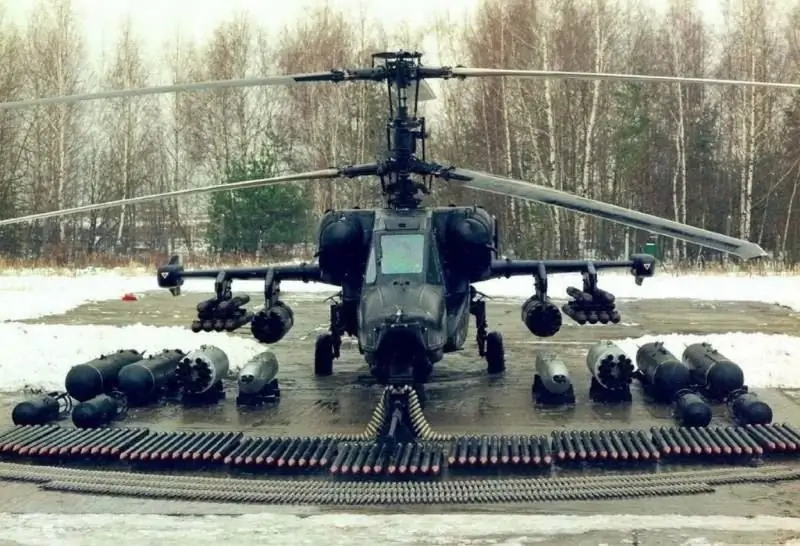
Tasks and problems of unification
Modern weapons are extremely expensive to develop, purchase and operate. Let's paraphrase Woland from Mikhail Bulgakov's novel "The Master and Margarita": the fact that weapons carriers (tanks, airplanes, helicopters) are expensive is still half the trouble, much worse is that consumables and supplies have become extremely expensive - ammunition for almost all types weapons. One of the ways to reduce the cost per unit of production is to increase the volume of its output.
An increase in production volumes can be achieved both by complete unification of products for various markets / market segments, and by unification of individual manufactured components. An example is the automotive industry, where many different cars for different markets are built on a single platform, or the computer industry, where the components are strictly standardized and the consumer can assemble the configuration he needs from components from different manufacturers.
In part, this unification also exists in the field of ammunition. Cartridges / shells from different manufacturers can be used within the same caliber of a rifle or gun. In the field of missile weapons, everything is much more complicated. Anti-tank guided missiles, anti-aircraft guided missiles, and many unguided weapons produced by various manufacturers are almost completely incompatible with each other.
In principle, there are certain reasons for this: different design schools, the use of different control systems, etc. At the same time, the task of unification one way or another arises when it is necessary to integrate several weapons on one carrier.
For example, you can recall the complex history of the creation and confrontation of the Ka-50/52 (M) and Mi-28A (N / NM) helicopters. Initially, the Ka-50/52 helicopters planned to use Vikhr anti-tank guided missiles (ATGM) developed by the Tula State Unitary Enterprise KBP, and the Mi-28 helicopter was supposed to use the Attack ATGM developed by the Kolomna Machine Building Bureau. Later, in the process of modernization, ATGM "Attack" was integrated into the Ka-52 helicopter. The promising Hermes ATGM is also likely to be installed on the Ka-52 (M) and Mi-28N (NM).
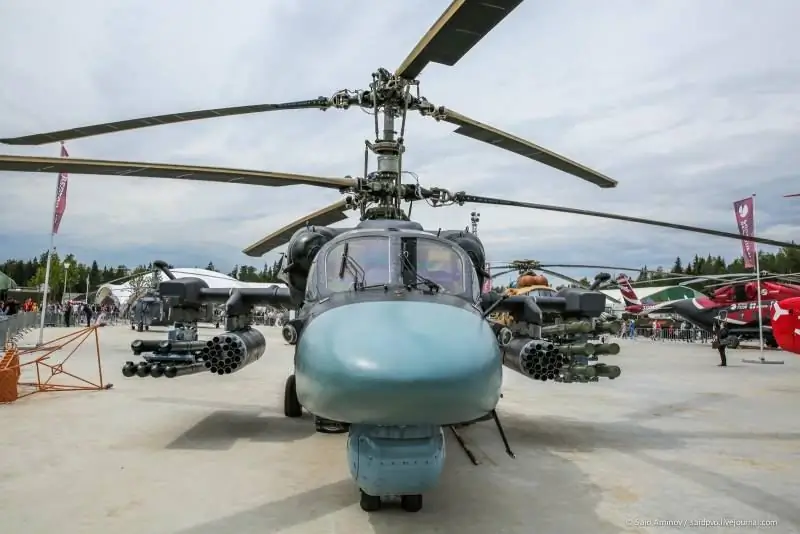
An important consequence of the introduction of standardization and unification is an increase in competition between different enterprises that can supply ammunition with similar parameters for any type or group of weapons. In this case, the customer gets the opportunity to choose: buy one of the proposed ammunition or buy several types of ammunition in the optimal ratio. For example, one ammunition has better characteristics, but is expensive, the other is simpler, but cheaper.
The ability to supply ammunition by several manufacturers significantly reduces the risk that an anti-tank missile system (ATGM), a combat helicopter or an anti-aircraft missile system (SAM) will be left without ammunition due to delays in the development or development of mass production of ammunition for them
In other words, it does not have time to go into the series of ATGM "Whirlwind" - ATGM "Attack" is purchased. The "Attack" does not satisfy the military - "Whirlwind" or the newest "Hermes" "matured", replaced the ammunition with them. It turns out that, regardless of the failures in the state defense order, combat helicopters are always armed with guided missiles.
Could it be possible to simplify the integration of ATGMs from different manufacturers into combat helicopters by introducing certain uniform requirements for this type of weapons? Of course, yes, the same ATGM "Attack" would be registered on the Ka-52 much easier and faster, and the ATGM "Whirlwind" could be included in the Mi-28N (NM) ammunition load.
The situation is different with self-propelled ATGM (SPTRK). For example, in the Russian army there are the Kornet-T SPTRK and the Chrysanthemum SPTRK, which solve the same problems. The ammunition between these SPTRKs is not interchangeable. They differ in size, in ATGM "Chrysanthemum" combined guidance is used: radio channel + laser trail, in ATGM "Kornet" - only "laser trail". If unified in a number of parameters, the Kornet ATGM could be used with the Chrysanthemum SPTRK without restrictions, and the Chrysanthemum ATGM could be used with the Kornet-T SPTRK with guidance only along the "laser path".

It is even more difficult with short-range and short-range air defense systems. In the Tunguska anti-aircraft missile and cannon complex (ZRPK), as well as in its conditional "successor" ZRPK "Pantsir"), radio command guidance is used, while in the Sosna air defense system there is laser guidance, the same "laser path", therefore, the unification of their ammunition can only be implemented in promising complexes with standardized requirements for guidance systems.

Not all types of weapons can be standardized. For example, in the TOR SAM family, ammunition is used, the placement and launching scheme of which is fundamentally different from those used in the Sosna air defense missile system, Tunguska air defense missile system and Pantsir air defense missile system, which makes the unification of their ammunition impossible, but this only means that that the missiles of the Pantsir air defense missile system can and should be unified within the framework of another type of ammunition intended for vertical launch complexes.
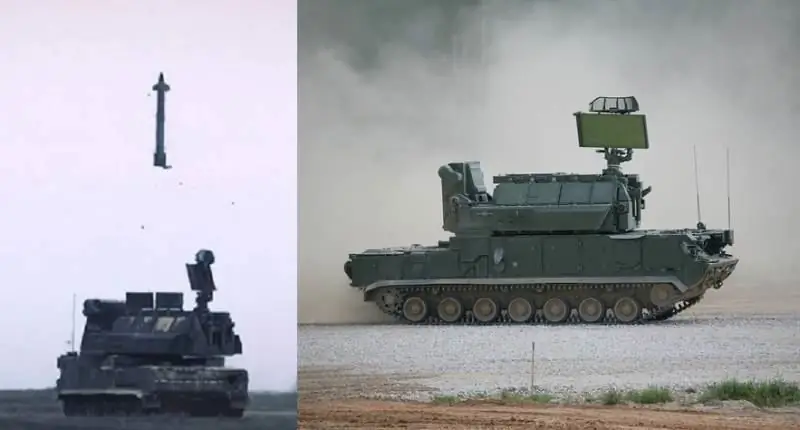
Ammunition unification is most likely possible only within one, partially two generations of ammunition. Further, technology will go ahead and outdated standards will slow down the development of weapons. In some cases, the so-called backward compatibility is possible, when a new complex of weapons will be able to use obsolete ammunition, but the old complex will no longer have new ammunition. This situation often arises in small arms, when modern ammunition is forbidden to be used in outdated samples of the same caliber: they will simply burst from the increased pressure in new ammunition.
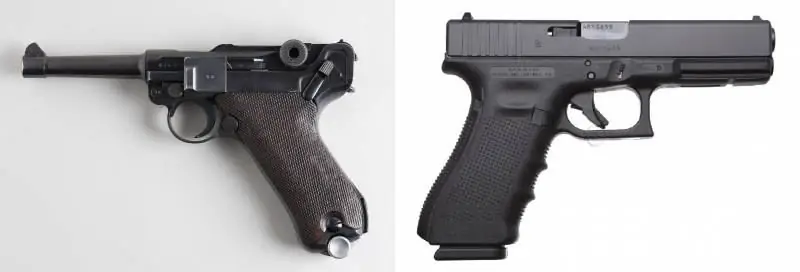
Interspecies unification
When we talk about the unification of ammunition for combat helicopters or air defense systems of the same class, but from different manufacturers, then everything is clear. The unification also looks justified between different types of weapons that solve similar tasks, for example, between combat helicopters and SPTRK.
The question arises: is unification necessary and possible between weapon systems performing different tasks on the battlefield, but within the same battlefield? For example, the unification of ammunition between SPTRK, combat helicopters and air defense systems? And, according to the author, such unification may well be justified
Let's abstract at the beginning from the technical side of the issue and talk about why the unification of ammunition for combat helicopters, SPTRK and SAM is needed.
For example, for ATGMs, by default, there is a task to destroy air targets. Sometimes the defeat of low-speed low-flying targets is carried out with standard ammunition, sometimes a specialized ammunition is developed for this purpose, in fact, an anti-aircraft guided missile (SAM), albeit with deliberately weak characteristics. In particular, there is a modification of the ATGM "Attack" 9M220O (9-A-2200) with a core warhead (CW) to destroy aircraft at a distance of up to 7,000 meters.
Another example is the Hermes guided weapon system (CWC), designed to engage ground targets, which is largely based on the solutions implemented in the Pantsir air defense missile system. The question arises: how difficult is it to implement the unification of the missiles used in the Pantsir air defense missile system and the surface-to-surface missiles (s-z) intended for the Hermes air defense missile system?

Why do we need the possibility of placing the ground-to-ground ammunition load of the Hermes KUV on the Pantsir air defense missile system? This does not mean at all that the air defense system should be “driven” onto tanks. In the first Chechen war, there was an experience of using the Tunguska air defense missile system against ground units, but it cannot be called successful: fifteen of the twenty vehicles involved were lost. Nevertheless, in the conditions of a modern highly dynamic battle, air defense missile systems / air defense systems may well face a ground enemy, and in this case, the ability to work out anti-tank or anti-personnel ammunition can become decisive for the survival of air defense systems / air defense systems. At the same time, the ammunition s-z can be located on the transport-loading vehicle, in a set of several units, without significant damage to the ammunition load of the missile defense system.
If missiles are created for the Hermes KUV with a range of about 70-100 km (as information periodically appears), then, in fact, this turns it into an operational-tactical missile system (OTRK). And in the case of unification of missiles z-z KUV "Hermes" and missiles for the ZRPK "Pantsir", the mentioned ZRPK are converted into OTRK.
Or consider the situation: our reconnaissance unmanned aerial vehicle (UAV) detected the enemy's OTRK, but in the area of operation where at the moment there are no our strike assets (OTRK, aviation, or other complexes), but there is an air defense missile system. You can't wait, the enemy's OTRK can strike or change position. In this case, if there is a ground-to-ground missile in the ammunition load, the Pantsir air defense missile system can easily destroy the enemy's OTRK. This interaction pattern can be considered quite natural for a network-centric battlefield.
Another scenario for the use of surface-to-surface missiles with air defense missile systems is their inclusion in the ammunition load of the shipborne version of the Pantsir air defense missile system, more precisely, in this case, the missiles will be more likely a ship-to-ship or a ship-to-surface missile (depending on the installed Warhead). This will expand the capabilities of ships to engage surface and ground targets with highly effective and inexpensive missiles. For naval air defense systems, the task of hitting surface targets is quite typical: let us recall one of the Georgian boats destroyed by the Osa-M air defense missile system in the 08.08.08 war. Specialized missiles will dramatically increase the efficiency of such tasks by shipborne air defense missile systems / air defense systems.

Why KUV "Hermes" or another SPTRK need missiles? First, the battlefield is currently being rapidly saturated with UAVs, which provide the enemy with intelligence and target designation and can themselves be used for an attack. By integrating SAMs into SPTRKs, we reduce their dependence on military air defense systems and at the same time reduce the load on the air defense systems themselves, which may not be distracted by every trifle.
Secondly, we create serious uncertainty for the adversary. For example, when planning a raid of attack aircraft at low altitudes, the enemy can study the location of the air defense missile system to bypass them or strike at them from the optimal direction. But if all SPTRKs are capable of using SAMs of the Tunguska air defense missile system, Pantsir air defense missile systems or Sosna air defense missile systems, then route planning will turn into a “Russian roulette”. The absence of a radar can even be beneficial here: a low-flying aircraft detected by optical-electronic systems can be attacked suddenly and without warning. As a result, it will either be destroyed, or abruptly change course and be exposed to the attack of "real" air defense systems.
The standardized ammunition will be useful on combat helicopters and UAVs. Moreover, both in the form of air-to-ground missiles (in-z), in fact, an ATGM, and in the form of air-to-air missiles (in-in), implemented on the basis of missiles. In the end, the creation of missiles based on air-to-air missiles has already been carried out, and the opposite is quite possible. The use of missiles from the ammunition of the Pantsir or Sosna air defense missile systems as air-to-air missiles will allow the Ka-52M or Mi-28NM combat helicopters to hit fairly complex air targets that are inaccessible to the Igla-V missiles currently used base of missiles for portable anti-aircraft missile systems.

And, finally, in light of the outlined positive trend in the development of Russian UAVs, for small and medium-sized UAVs, unified ammunition of all types can become the basis of ammunition, the advantages of which will be maximum versatility and relative cheapness in comparison with other guided aviation ammunition.

It should be noted that the United States has long been using the AGM-114 Hellfire ATGM with UAVs: they have already had hundreds, and possibly thousands, of destroyed targets on their account.
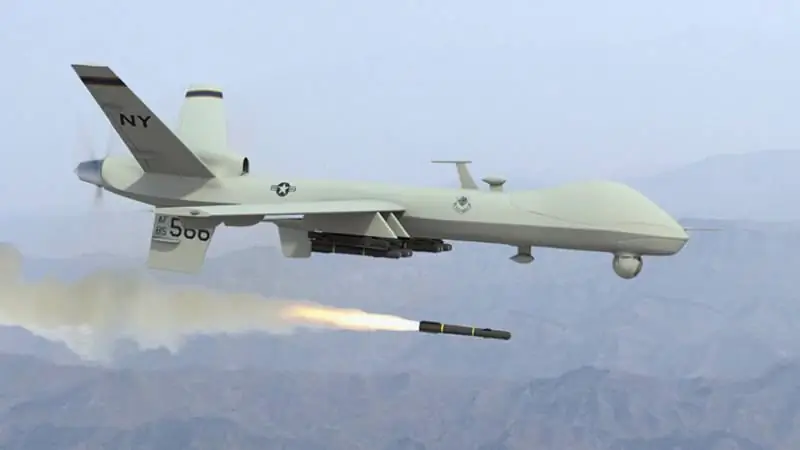
Unified ammunition format and development enterprises
What should ammunition unification look like? Initially, this is the standardization of weight and size characteristics, connection interfaces and software in terms of the "ammunition-carrier" exchange protocols, as well as many other parameters.
Different enterprises have different sizes of ammunition, sometimes they differ slightly, sometimes quite significantly. For example, the diameter of the Kornet ATGM and the Chrysanthemum ATGM is 152 mm, while these ammunition differs significantly in length: 1200 mm for the Kornet ATGM versus 2040 mm for the Chrysanthemum ATGM. Even greater differences in size exist between the Sosna air defense missile system and the Pantsir air defense missile system.
Ammunition unification will require making certain strong-willed decisions that may not please all developers. However, in the long term, this approach will pay off.
For example, unified ammunition in the dimensions of transport and launch containers (TPK) can be standardized:
- standard size No. 1 - full-size, approximately 2800-3200 mm long and 170-180 mm in diameter;
- standard size No. 2 - half size, approximately 1400-1600 mm long and 170-180 mm in diameter;
- standard size No. 3 - ammunition of reduced dimensions, placed in several pieces in one container, which can be realized in the same way as the missiles of reduced dimensions are implemented in the Pantsir-SM air defense missile system. Ammunition size 3 can be sold for both size 1 and size 2.

Accordingly, the seats, weapons bays, guides and launchers can be configured in such a way that carriers capable of using ammunition of size 1 could also use ammunition of size 2. At the same time, carriers capable of working with ammunition of size 2 will not always be able to work with ammunition of size 1 due to size limitations of the weapons compartment.
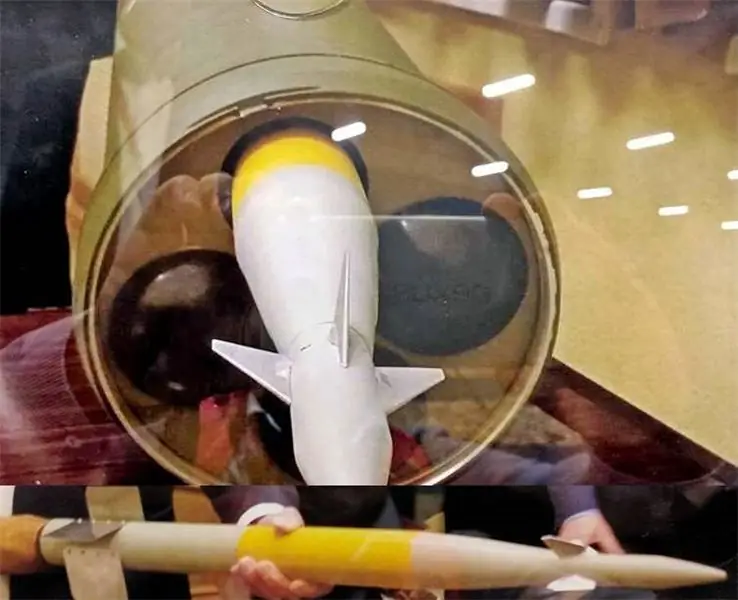
Of course, in addition to weight and size characteristics, physical and software connection interfaces, ammunition unification will require standardization and many other parameters.
For ammunition with different guidance systems, for example, with guidance along the "laser path" or with radio command guidance, complete unification can be achieved only if the carrier has appropriate guidance systems. Or partial unification is possible, if only one of these systems is present on the carrier and ammunition. Depending on the complexity, efficiency and cost of one or another guidance system, it can be chosen as the basic one, used by default and supplemented, if necessary, with other unified guidance systems.
The unification of ammunition will make it possible to involve in their development a large number of Russian enterprises involved in the development of guided and unguided missile weapons. In particular, these may be the following enterprises of the Russian military-industrial complex (MIC):
- KBP JSC, Tula;
- JSC NPK KBM, Kolomna, Moscow Region;
- JSC NPO SPLAV named after A. N. Ganichev , Tula;
- JSC NPO Bazalt, Moscow;
- JSC "GosMKB" Vympel "them. I. I. Toropov ", Moscow;
- JSC "GosMKB" Raduga "them. AND I. Bereznyak ", Dubna, Moscow region.
It is possible that this list can be significantly expanded. It is important that potential developers have access to information on the requirements and standards for standardized ammunition. Equally, this information should be available to developers of promising carriers - so that they can integrate standardized ammunition into their products.






